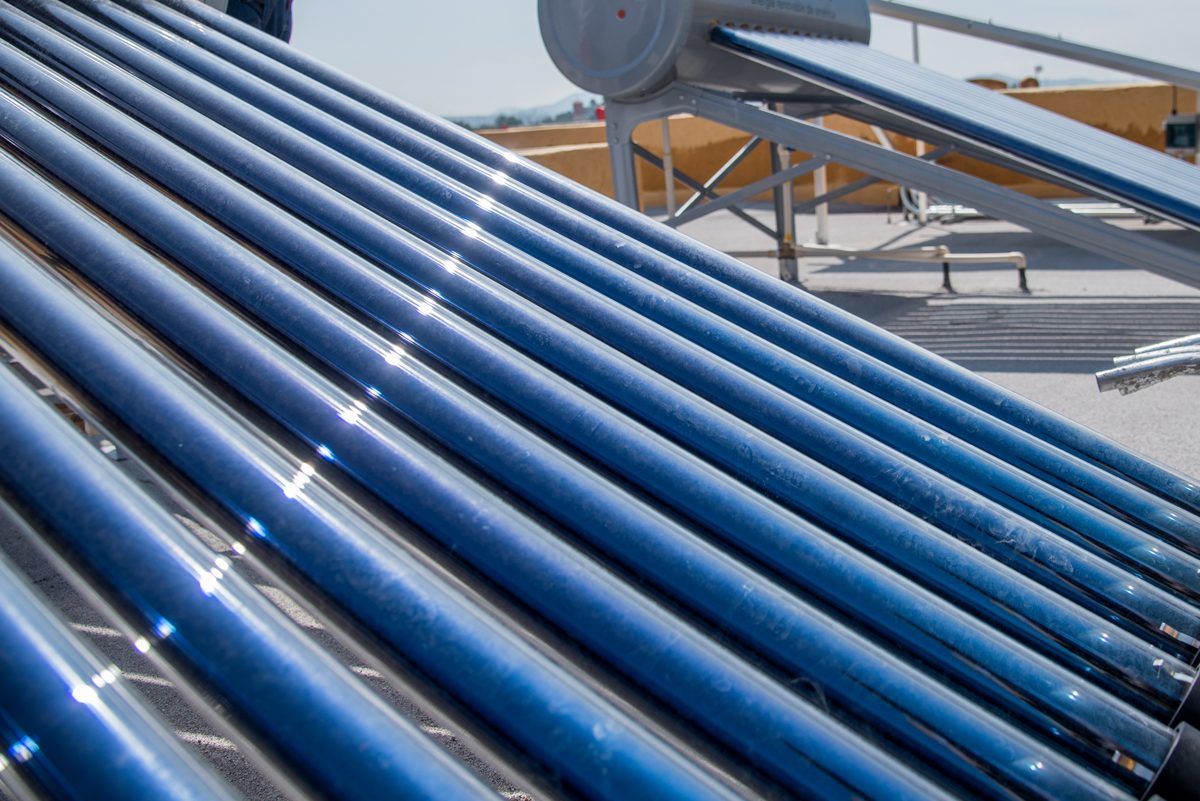The majority of solar tubes will come in sizes ranging from 250-500 mm in diameter.
Average Solar Tube Sizes
These various sizes offer a good range to choose from when deciding how much space you’d like to utilize inside or outside the home. So, what size should you pick? Here are a few estimates:
- 250 mm solar tubes can cover up to 10 square meters, ideal for hallways and bathrooms.
- 350-400 mm tubes are perfect for most larger bathrooms and stairwells.
- 550 mm solar tubes are selected for bedrooms, kitchens and living rooms sized between 15-22 square meters.
Of course, very large rooms can have multiple solar tubes installed. These tubes are relatively easy to install and can save home/business owners a lot of money on electricity over time.
Solar Tube Options
Solar tubes are known by several different names, including light tubes, sun tunnels and daylight pipes. Their main purpose is to channel outside daylight into your home as efficiently as possible. While these tubes do not offer any outdoor views, they will provide a natural and cost-effective way of illuminating dark interior spaces without the use of electricity.
Solar tubes can be placed between roof rafters. Compared to skylights, solar tubes will minimize both heat gains and losses. Many homeowners choose to invest in solar tubes for the lighting they can create in bathrooms, closets, hallways and other areas.
Here is a look at some popular solar tube options:
Rigid Solar Tubes
Rigid solar tubes will offer better light transmission than flexible tubes. They will also let the light channel down the tube from the roof to rooms and other areas, directly. This is made possible because the less the light resiles off the pipe’s inner surface, the more natural light will be transmitted to the desired locations.
If your home has a long distance to cover from roof to room (larger than 2 meters), a rigid solar tube will better channelize maximum daylight. Rigid tubes do actually have a better chance at delivering light through bends compared to flexible tubes.
Flexible Solar Tubes
Ideal for shorter distances, flexible tubes are usually found on flat roofing systems. Homeowners often choose this style because it is much cheaper. Due to the structure of the flexible tube, less light will reflect than the rigid version.
How Do Solar Tubes Work?
The heads of the solar tubes are optically engineered to direct as much light into the tunnel below as possible. These come in a variety of sizes, ranging from 1-2 feet in diameter. Typically, they will be protected with a weather-resistant acrylic dome. The skylight tube piping length can be extended and is lined with a continuous mirror, which amplifies the direct sunlight as it pushes through to its target.
Velux is one of the leading manufacturers of solar tubing. They specialize in sleeker aesthetics; popular in newer homes. Most tubes will feature a UV ray protection system. This will likely be located at the source of the sunlight on the roofing or in the light diffuser (end of the tube). This ensures the sunlight that enters the home will not cause any adverse health effects or damage the area.
How Much Do Solar Tubes Cost?
On average, solar tubes cost $750 in the year 2022, with prices ranging from $500 to $1,000. Meanwhile, traditional skylights will cost an average of $2,000. You may be able to handle installation yourself if you decide to purchase a kit that costs between $200-$400. Unlike traditional skylights, solar lights do not need any additional drywall.
*This is not an actual quote. Contact Elite Home Daylighting Systems today for more information.
Solar Tubes Pros & Cons
Pros:
- Save money on electricity
- Natural source of daylight without any added heat or glare
- Generally no repairs or maintenance needed
- Won’t fade furniture or clothing
- Save on installation costs compared to traditional skylights
- Eligible to receive federal tax credits which will lower installation costs
- No loss of cooling or heating energy
- Leak and damage proof design
- Will not build water condensation over time
- Built for extreme Arizona conditions and temperatures
- Preferred upgrade for realtors – will add to your home’s value
Cons:
- These lights do not offer a direct look at the sky
- Cannot be opened like traditional skylights
- Cannot block out light without dimmer kit installed
- Damaged flashing can lead to roof leaks
Where To Install Solar Tubes
These are few common areas where solar tubes are installed in homes:
- Hallways
- Stairways
- Kitchens
- Closets
- Bathrooms
- Laundry Rooms
The only places you do not want to install solar tubes would be above a screen. Installing these directly above a television or computer will cause a noticeable glare.
Solar Tube Installation In The East Valley
Elite Home Daylighting Systems offers tubular skylights and solar attic fan installation services to the entire Phoenix east valley. Service area includes Chandler, Gilbert, Mesa, Tempe & more! Contact us for a free quote today!
More Articles About Solar Tubes
- Why Go Solar In Arizona?
- How To Remove A Skylight
- Best Skylight Ideas For Your Home
- Roof Window Vs Skylight
- Solar Attic Fan Installation Cost
- 5 Benefits Of Sunlight Through Windows
- How Much Does It Cost To Install A Skylight?
- Sun Tunnel Vs Skylight
- Skylight Dome Replacement Guide
- Skylights Replacement Cost
- Skylights Near Me In East Valley Phoenix
- How Long Do Skylights Last
- Do Solar Attic Fans Work
- How To Clean Skylights In 5 Steps
- Everything You Need To Know About Solar Fans
- How To Install Solar Attic Fan
- Skylights Vs Solar Tubes: Costs, Pros And Cons
- How Much Do Solar Tubes Cost?
- 6 Easy Ways To Lower Your Electric Bill In Arizona
- Solar Attic Fans Pros And Cons
- Tubular Skylights Pros And Cons





